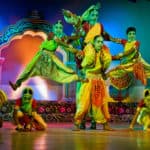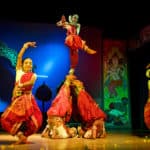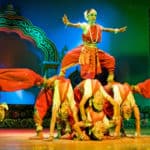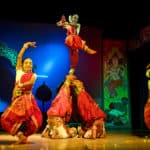“The precursor of the Odissi classical dance” is the best way to describe a traditional Indian dance form referred to as Gotipua. This “classical” form of dancing has originated from the state of Odisha, and is performed mainly by young boys dressed up as girls. In this dance style, the training of the young dancers (boys) begins during childhood and ends only at the stage of adolescence. Furthermore, this dance requires the young male dancers to appear more feminine by growing their hair long, and tying it in a knot.
a. History/origin of the Gotipua:
According to the cultural history of Odisha, this style of dancing is said to have originated from an ancient dance known as Mahari, which was performed by dancers known as “devadasi”. However, it was during the 16th century during the reign of King Rama Chandra Dev that the state witnessed a sudden decline in the Mahari dance performances. It was during this period of decline that Gotipua as a dance form began to take shape. In addition, it is also said that it is the development of Gotipua that eventually led to the creation of the Odissi dance style.
b. Costumes used in the Gotipua:
The costumes used by the young male dancers include:
- Kanchula: A traditional dress which, essentially comprises of a colourful blouse possessing shiny decorations.
- Nibibandha: Basically a type of an apron made up of silk, tied around the waist, and is worn around the legs.
- Pattasari: Is a thin piece of fabric about 4 meters in length that is worn by tying a tight knot around the navel.
In addition, the costume used in this dance form also includes beaded jewellery, necklaces, bracelets, armbands, and ear and nose ornaments.
c. Music involved in the Gotipua:
The musical instruments mainly used in this dance form include the harmonium, a mardala i.e. a form of a drum, and a gini i.e. a pair of cymbals. Accompanying the music is a love poem whose lyric is as follows:
“Come and see, my love
Here comes Krishna, the flute player, the Supreme Performer
Come and see, my love
He dances wearing ankles bells
So lovely rhythmic patterns he makes
Listen to his melodies, the mardala beats
Listen to his flute and clappings.”
d. Training availability and technique involved in the Gotipua:
This dance performance normally begins on auspicious note with a prayer called “Vandana”. The dancers then perform a three step salutation, and they include
1. The Sarigama:
In this step the performer basically celebrates true beauty.
2. Abhinaya:
In this step the performer through the use of fluid feet movements, facial expressions, and hand gestures i.e. mudras enacts the traditional song sung along with the accompanying music during a performance.
3. Bandha Nrutya:
In this step the performer showcases a few extremely difficult and intricate acrobatic yogic postures. It is said that the training of a performer for this step needs to begin at the tender age of five or six.
Furthermore, the complete details of the feet movement, hand gestures, and standing postures required in this dance form have been written in a 15th century Odissi text known as Abhinaya Chandrika.
With regards to training centre/schools, there are none available whatsoever throughout the country since this dance form essentially belongs to the state of Odisha, and is passed on from one generation to another.








